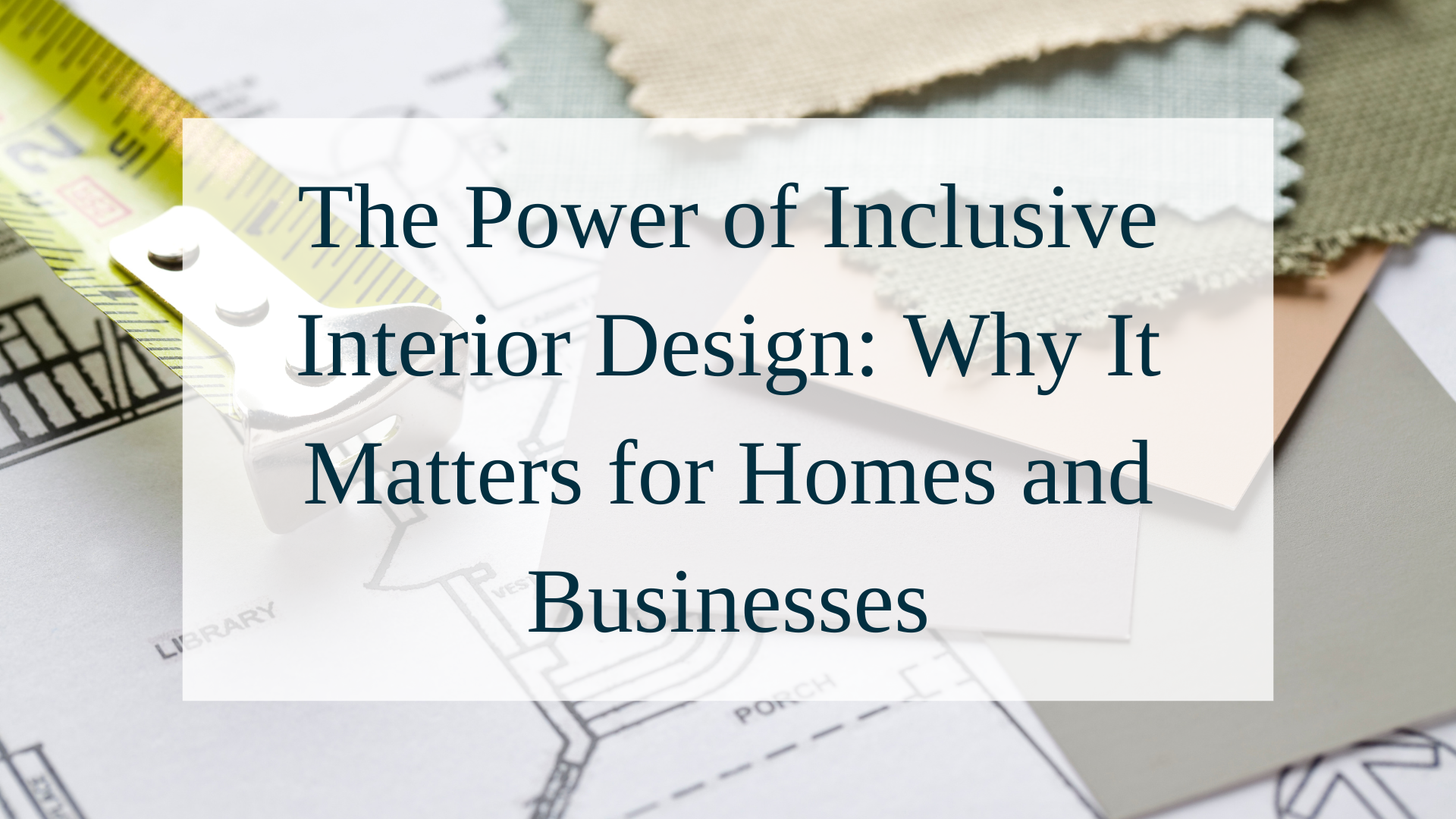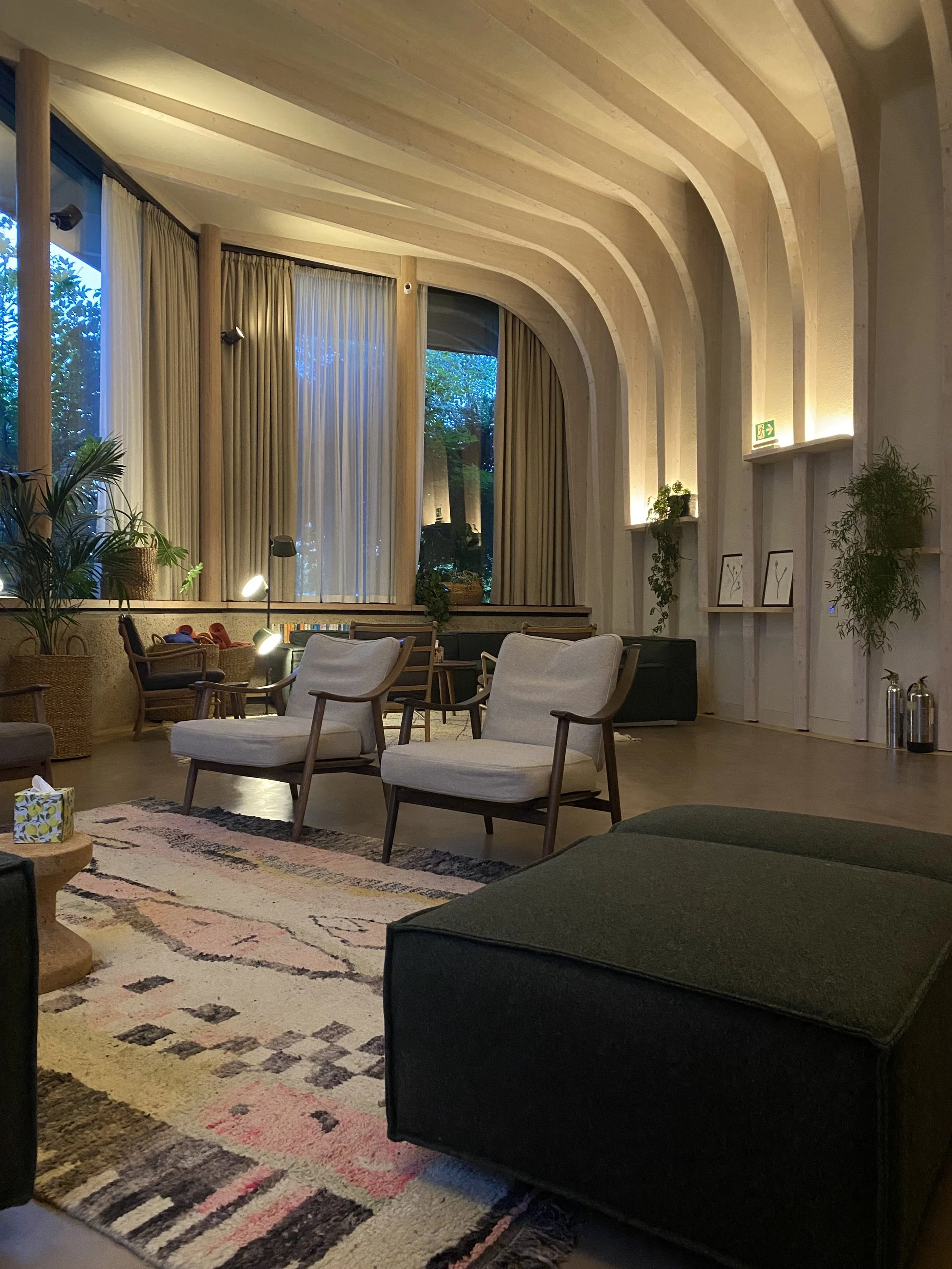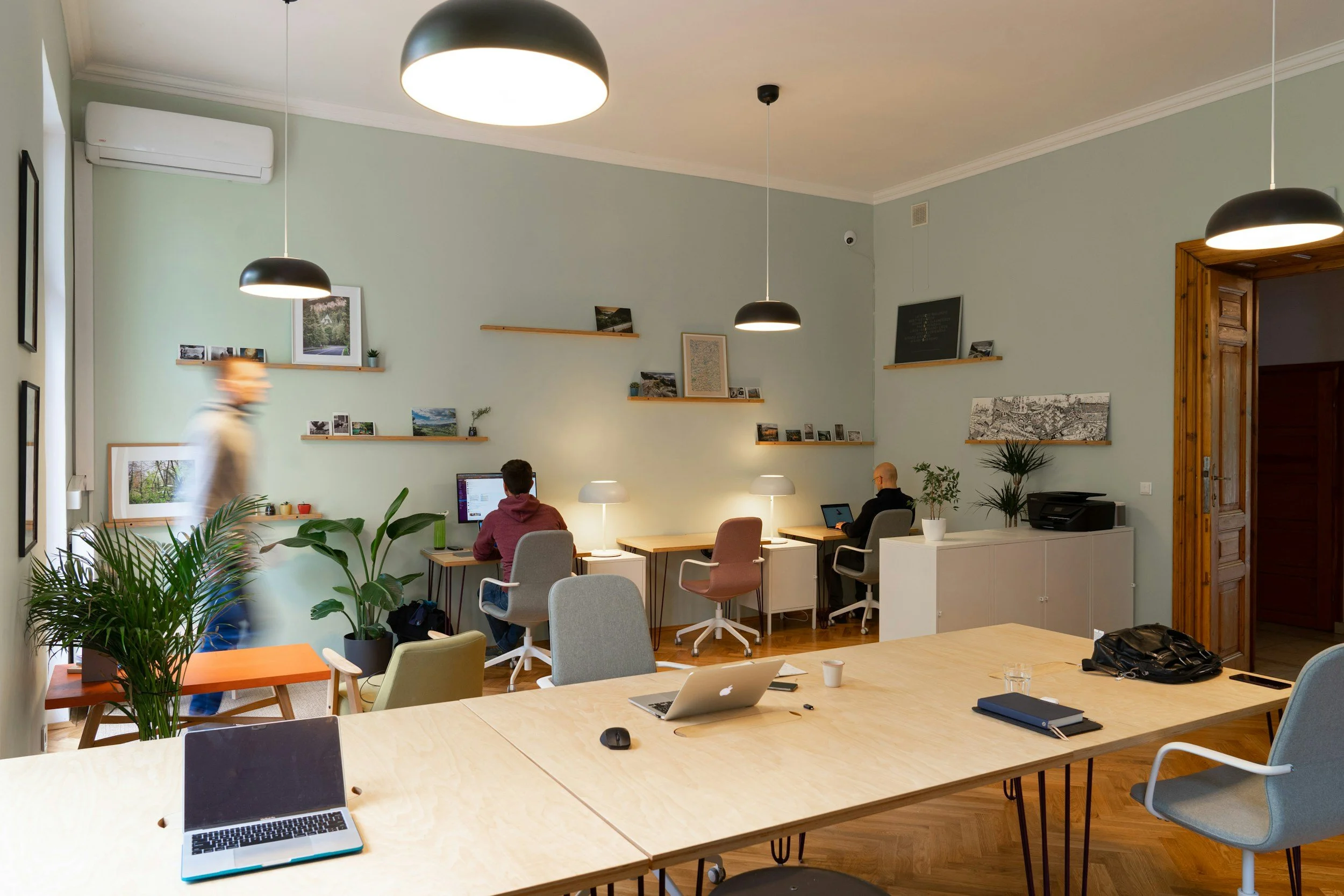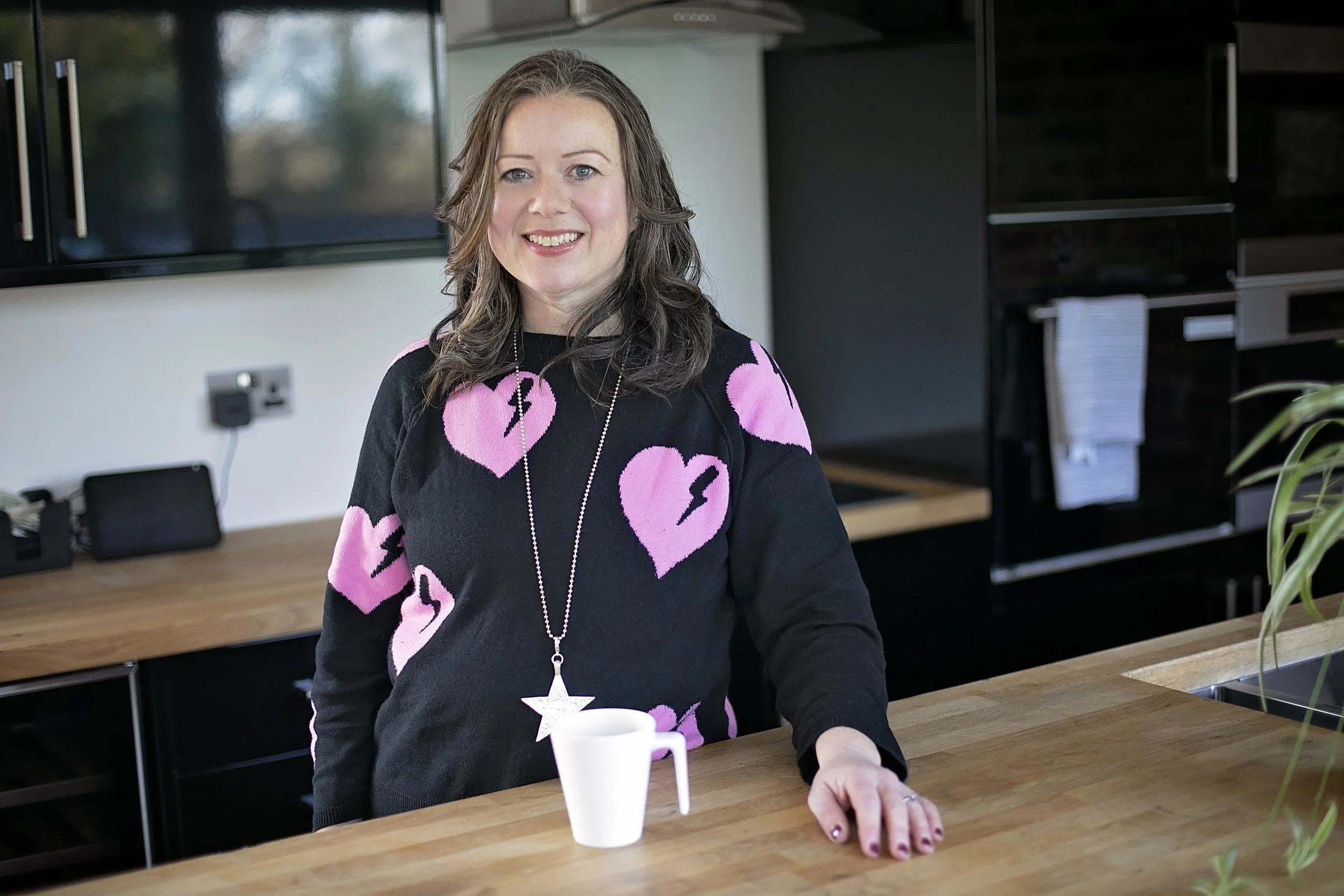The Power of Inclusive Interior Design: Why It Matters for Homes and Businesses
At Nest and Flourish Interiors I specialise in Inclusive and Accessible design - creating spaces that promote wellbeing, comfort, dignity and independence for all who use them, without compromising on style.
Today I want to explore why inclusive interior design is so vital for both homes and businesses. I’ll break down the concept, its benefits, and practical steps you can take to create more inclusive spaces.
What is Inclusive Interior design?
Inclusive interior design focuses on creating spaces that are functional, comfortable and enjoyable for the widest range of people, regardless of their diverse backgrounds, abilities, or needs.
While accessible design ensures environments can be used by individuals with physical, sensory, cognitive, or age-related disabilities, inclusive design goes beyond accessibility requirements. Inclusive design actively considers the full spectrum of human diversity, including differences in ability, age, gender, culture, language, and socio-economic status.
I often say: An accessible space may not be inclusive, but an inclusive space is always accessible.
Why Should You Care About Inclusive Interiors?
You may not have thought about, or even heard of inclusive interior design before, but I have some compelling reasons why it’s worth considering for your home or workplace.
The Benefits of Inclusive Design
1. It future-proofs your space. Designing with inclusion in mind can save money by reducing the need for costly renovations down the line.
2. It promotes equity and community. An inclusive space supports diversity, fosters integration and ensures everyone feels welcome.
3. It enhances usability and demand. As awareness of inclusive spaces grows, so does the demand for them, increasing the value and marketability of your property or business.
Important:
Don't assume that inclusive interior design is only for a minority and the majority of us don’t need inclusive spaces.
The truth is, when you take steps to make a space more inclusive EVERYONE benefits. Think about it: who doesn’t appreciate a nice wide doorway? A smooth, even floor? Clear, colour-coded signage for easy navigation? These are just a few examples of how inclusive spaces make life easier for all.
The Impact of Inclusive Interior Design
Beyond understanding what inclusive interior design is, it’s crucial to recognise its real-world impact—on you, your home, and your business.
Inclusivity isn’t just about compliance; it’s about creating spaces where everyone feels welcome.
Why It Matters for Businesses:
16 million people in the UK live with a disability.
The “Purple Pound”—the collective spending power of disabled people and their households—is worth £247 billion per year.
For businesses, embracing inclusive design means:
Attracting More Customers – A space free from barriers welcomes more visitors and clients.
Drawing in Top Talent – An inclusive workplace values and supports employees, fostering a positive work culture.
Increasing Long-Term Value – Future-proofing your premises ensures long-term usability and marketability.
Why It Matters for Homeowners:
Demand for accessible homes is rising—even among non-disabled individuals—because:
We all benefit from inclusive spaces.
People want homes that support diverse needs and create a fairer society.
Future-proofing protects against unexpected life changes, such as illness or injury.
A Real-Life Example:
I was talking to someone recently whose parents had renovated their downstairs cloakroom. Their plumber suggested adding a shower, but they declined since they didn’t need one at the time. A few years later, due to illness, her mother can no longer manage stairs and has had to move her bed downstairs—without access to a shower. While they could renovate now, the stress and disruption during illness make it far from ideal and they regret not making the investment earlier.
Renovations aren’t cheap, but that’s exactly why we need to think ahead and future-proof our homes so that they support us now and will continue to do so in years to come. It saves money on costly redesigns later and adds long-term value.
Check Out: Maggie’s Cancer support centres are inspiring examples of Inclusive Interior Design in action.
The Maggie’s Centre in Yorkshire has been designed to be a healing and welcoming space.
Practical Tips for Inclusive Design
So, how can you make your home or workplace more inclusive? Here are some easy, practical steps:
For Homes:
Plan for the Future – Include a downstairs room that could function as a bedroom and, if possible, install a shower downstairs.
For Workplaces:
Ditch the “One-Size-Fits-All” Mentality – Offer flexibility: ergonomic furniture, adjustable lighting, quiet spaces, and co-working areas.
Providing choice in the workplace with hot-desking policies, flexible seating and lighting options, and areas for communal and individual working helps to create a more inclusive environment. (Image credit: Yolk Coworking via Unsplash)
Key Takeaways
Inclusive design benefits everyone—not just specific groups.
It’s a smart investment—saving money, adding value, and increasing marketability.
It’s about creating welcoming spaces—where people feel comfortable, empowered, and independent.
At Nest and Flourish Interiors I am passionate about inclusion and I believe good design is for everyone. Using my 20 years experience in nursing to inform my approach to interior design, I make it my mission to design spaces that promote inclusion and encourage wellbeing, independence and dignity of all who use them, without compromising on style.
I offer a range of interior design services, for residential and commercial settings, to suit different budgets and requirements. I also advocate for accessibility and inclusion, and the impact our surroundings have on our health and wellbeing, through public speaking engagements.
Want to Work With Me?
Contact me or schedule a free discovery call. I’d love to hear from you




